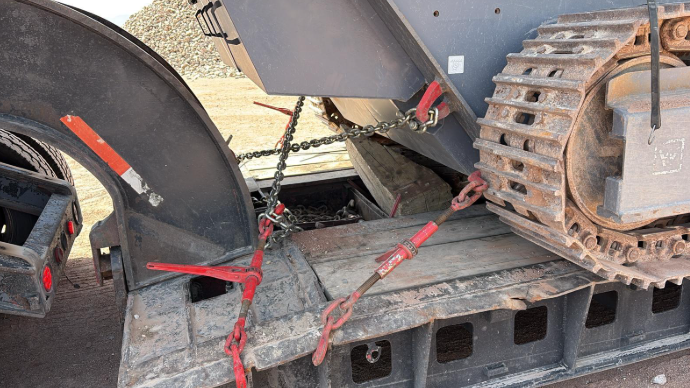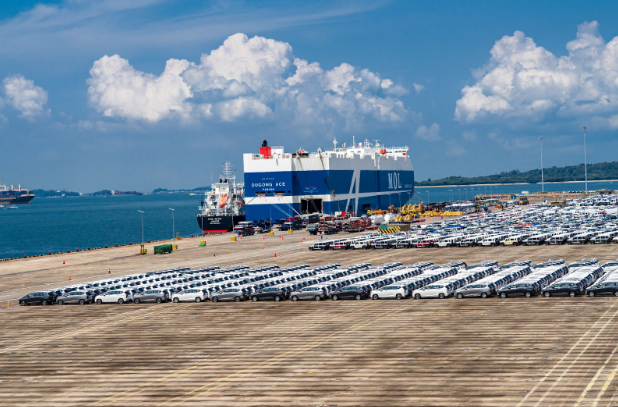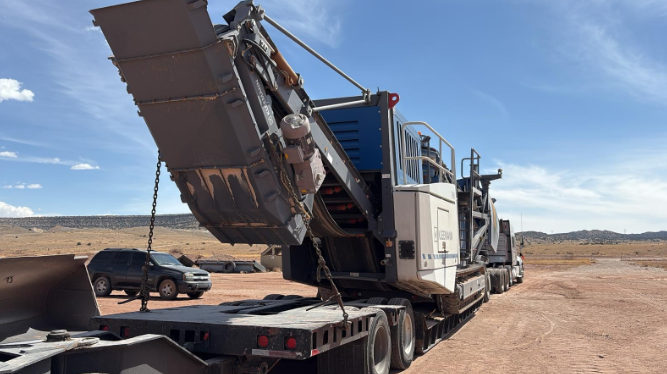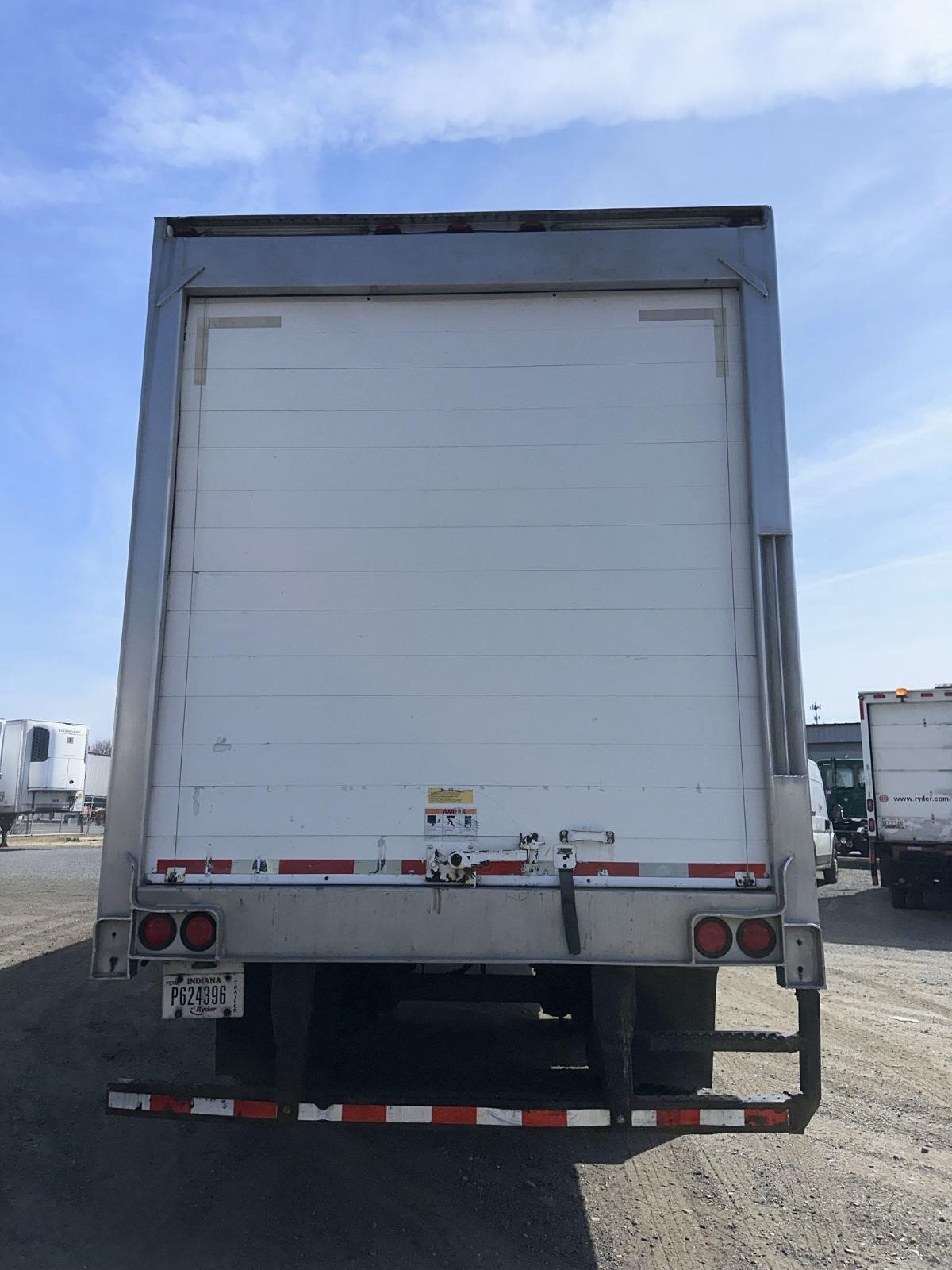
Photo by Aleksander Polanowski on Vecteezy: Man calculates freight classification using a tablet computer
When you’re shipping Less-Than-Truckload (LTL), freight class matters. It affects your rates, how your cargo is handled, and even how fast it gets delivered.
With LTL, your freight shares space with other shipments, which sounds smart and efficient, because it is—but only if it’s classified correctly. Get it wrong, and you’re looking at delays, fees, or worse.
In this article, we’ll look at how freight classes impact your shipping costs and reveal strategies to optimize classifications for significant savings.
| Key takeaways Freight classes range from 50 (dense, durable items) to 500 (light, bulky freight), and directly impact your LTL shipping rates. Higher classes often cost 3–5 times more to ship due to increased handling, risk, and space inefficiency. Accurate classification relies on four key factors: density, stowability, handling, and liability. Misclassification can trigger carrier audits, retroactive charges, and costly disputes. Smart packaging and pallet consolidation can improve density and reduce your freight class. Verified weights, dimensions, and up-to-date NMFC codes are essential for compliance. Carriers increasingly rely on automated systems—guesswork and manual errors cost time and money. Partnering with STT helps you optimize classifications, avoid reclass charges, and control freight costs with confidence. |
What Are Freight Classes?
Freight classes were introduced in 1936 by the National Motor Freight Traffic Association (NMFTA) to bring structure to what used to be a pricing free-for-all. The system ranges from Class 50 to Class 500, and every item you ship falls somewhere in between.
Why Freight Classes Exist
We can think of freight class as a blueprint that carriers use to:
- Assess cost: Higher classes often cost more to ship
- Allocate space: Bulkier or oddly shaped freight needs more room
- Achieve safety: Fragile or hazardous cargo needs special handling
- Standardize quotes: Carriers use the same classification, so you can compare apples to apples when evaluating different shipping options
Why It Works
A standardized system means fewer surprises and better planning for everyone involved. For carriers, it reduces risk. For businesses, it turns shipping from a guessing game into a budgetable line item.
At STT, we use freight class as one of the tools to make your LTL shipping as smooth—and cost-effective—as possible.
What Determines Your Freight Class?
Freight class is based on four key factors, each affecting how your shipment is packed, priced, and transported:
- Density
How much space does your freight take up compared to its weight? This is the number one factor in freight classification.
- Calculated as weight ÷ volume (cubic feet)
- The denser the shipment, the lower the freight class (and usually, the cost)
Example: A shipment of boxed machine components weighs 100 lbs and occupies 20 cubic feet, giving it a density of 5 lbs per cubic foot. Due to its low density, this shipment could fall into a higher freight class (e.g. Class 175)—which means higher shipping rates.
Now compare that to a 100 lb stack of steel rods packed tightly into 5 cubic feet. This shipment has a density of 20 lbs per cubic foot, likely qualifying it for a lower freight class (e.g. Class 50 or 55)—and a significantly lower cost per hundredweight.
- Stowability
Can your freight play nice with others? Does it slot usefully into a regular-size spot in a shipping container or trailer, or is it awkward in dimensions? As a rule, odd shapes or fragile builds that don’t stack or pack easily may be assigned a higher class.
- Irregular items take up more space
- Difficult-to-stack freight reduces overall trailer efficiency
Example: Imagine you’re shipping a large, asymmetrical art sculpture that can’t be stacked, tilted, or boxed neatly. Because it eats up space and can’t ride safely alongside other freight, it disrupts the trailer’s efficiency—so is likely to be assigned a higher freight class, even if it doesn’t weigh much.
- Handling
How easy is it to load, move, and unload?
- Items that need special equipment, extra manpower, or delicate treatment raise the class
- More complexity = higher cost
Example: Picture a delicate antique mirror with gold-leaf framing. It requires custom crating, careful lifting, and possibly climate control during transit. Because of the special equipment and extra care needed at every step, this type of freight is classified higher—reflecting the hands-on labor and risk involved.
- Liability
What happens if something goes wrong?
- Fragile, valuable, or high-risk freight = more liability for carriers
- These items are classified higher to cover risk
Example: A shipment of designer watches might be compact and easy to load, but its high value and theft risk drive up liability—and therefore the freight class.
A Note on Packaging & Special Goods
When you’re packing up your freight, the right crating can improve density, protect your cargo, and reduce classification—and most importantly, keep costs at a minimum.
Also important: Some goods come pre-classified. Hazardous materials, temperature-sensitive freight, or items needing special permits are always assigned higher classes due to the care, equipment, and compliance required.
Breaking Down the Freight Classes
As we’ve discovered, freight classes—from 50 to 500—are how carriers evaluate cost, space, and risk. But what do the different numbers actually mean? Here’s a quick breakdown of what each range typically covers, and why it matters.
Freight Class Summary Table
| Class | Description | Examples | Key Considerations |
| 50 | “Shipper’s Sweet Spot” | Bricks, hardware, cast iron | Dense, durable items with minimal risk. Lowest shipping rates. |
| 85–125 | “Everyday Movers” | Office furniture, auto parts, industrial supplies | Standard commercial freight. Balanced cost and handling. |
| 150–250 | “Fragile or Valuable Cargo” | Electronics, glassware, precision equipment | Requires special handling. Higher value = higher classification. |
| 300–500 | “Lightweight, Space-Hungry Loads” | Ping-pong balls, foam products, display props | Low density = high class. Expensive due to inefficient use of space. |
| Special Commodities | “Off the Chart” | Hazardous materials, temp-sensitive or irregular cargo | Not covered by standard classes. Needs custom handling agreements. |
How Freight Classes Directly Impact Your Shipping Costs
Photo by Yulia Gapeenko on Vecteezy: Crates of boxes awaiting loading onto a cargo plan at sunset
It’s time to talk dollars. Because freight classification is just one of several levers that control your shipping spend—alongside factors like distance, dimensions, weight, handling needs, and route complexity.
The higher the freight class, the more it’ll cost to move. A bump from Class 85 to 250 can triple or even quadruple your rate per hundredweight (CWT). Why? Because higher classes usually mean harder-to-handle, space-hungry, or higher-risk freight—and carriers price accordingly.
Here’s what we see behind the scenes:
- More handling = more labor
- More space = fewer shipments per truck
- More risk = more insurance and liability
Misclassification = Extra Charges
Carriers regularly re-weigh, re-measure, and re-classify shipments. If your class is off, you can expect a correction charge—or worse, a retroactive invoice that throws your budget off course.
Volume Discounts? Depends on Class
While high-volume shippers do get perks, the best deals often go to those shipping denser, lower-class freight. The more economical your load is for the carrier, the better the rate you’ll likely secure.
Know Your Mix, Negotiate Better
Clients who understand their classification profile tend to win stronger contracts. It’s one of the freight fundamentals we coach shippers on at STT.
Common Freight Classification Mistakes—and How to Avoid Them
Classification isn’t just about paperwork—it’s strategy, too. But even seasoned shippers fall into traps that cost time, money, and credibility.
Here’s where it goes wrong:
- Guessing weight and dimensions
“Close enough” won’t always cut it, so you need to use verified measurements to work out your freight class. Carriers will double-check—and if you’re off, you’re the one who’ll pay. - Using outdated NMFC codes
The National Motor Freight Classification (NMFC) database is constantly evolving. Old codes = automatic reclassification. - Forgetting to reclassify after packaging changes
That new box or shrink-wrap? It could change your density and stowability, so you’ll need to update your class accordingly. - Ignoring special handling needs
If your shipment needs refrigeration, climate control, or delicate loading, you’ll have to factor that in. Otherwise, expect billing disputes later.
The STT advantage: Our clients tend to avoid these pitfalls because, as an experienced and professional logistics broker, we walk through classification at the quoting stage—not AFTER a problem arises!
How to Accurately Determine Your Freight Class
Want fewer disputes and more predictable pricing? It starts with getting your freight class right from the get-go. Here’s how we do it:
Calculate Density
Use the formula: weight (lbs) ÷ volume (cubic feet). This tells you how efficiently your freight uses trailer space—a big driver of class.
Check the NMFC guide
This is your classification bible. Look up your commodity code and match it to your product. If it’s not obvious, we are always here to help.
Document Everything
Photos, dimensions, weights, and any special requirements—record it all. That way, if a carrier questions your class, you’ve got evidence and back-up information all ready.
Use Dimensional Scanning Tech
For frequent shippers, investing in dimensional scanners pays off in accuracy and audit-proof documentation.
Call in the Pros
Complex freight? STT’s team (and our trusted partners) can verify classification with the paperwork to back it up.
Lowering Your Freight Class Through Smart Packaging
Smart packaging is a fantastic way to sharpen your cost-efficiency. When you optimize how your freight is packed, you’re accessing a wide range of benefits including:
1. Reducing the risk of damage in transit
2. Unlocking lower freight classes
3. Achieving better space utilization
4. Facilitating faster handling at every step
Whether that means tighter pallet stacking, custom-fit containers, or rethinking protective materials, these small changes can have a big impact on your shipping spend.
At STT, we’ve seen strategic packaging turn bloated freight bills into lean, predictable expenses—and that’s exactly the kind of edge we like to deliver.
Here’s how to package for better classification:
- Consolidate pallets
Maximize space and density. One solid, well-stacked pallet beats three half-empty ones. - Reduce dimensions (without compromising protection)
Smaller packaging = higher density = potentially lower class. - Redesign for efficiency
Clients who engineer their products and packaging for shipping see serious savings—sometimes cutting costs by up to 20%. - Standardize protocols
Using the same packaging across all locations simplifies classification and prevents mistakes.
Bonus: Eco-friendly packaging options often lead to lower weight and carrier incentives. Save money and the planet? Yes, please.
Managing Freight Class Disputes Like a Pro
Even with the best prep, disputes can crop up. Here’s how we keep them from becoming disasters:
Keep a Paper Trail
Photos, dimensions, weights, NMFC codes—store it all. It’s your evidence when a classification is questioned.
Get Inspection Certificates
When needed, request a formal inspection to validate your classification. This adds a layer of credibility.
Have a Dispute Plan
STT helps clients set up a process for resolving classification issues quickly and fairly. Don’t scramble after the fact—plan ahead.
Build Strong Carrier Relationships
Disputes get resolved faster when carriers trust your documentation and communication. At STT, we maintain those relationships so our clients don’t have to.
The Tech Behind Better Classification
As our world has become more digitalized and better connected, technology has become the backbone of smarter, faster, and more cost-effective shipping. From automated freight classification tools to real-time dimensional scanning, today’s tech has the power to streamline workflows, protect your margins, reduce human error, and keep your cargo compliant.
As freight classes get tighter and carrier audits get tougher, relying on guesswork or manual entry is risky and potentially expensive, too. With the right systems in place, you can keep up and stay ahead. Here are some of the state-of-the-art tools assisting with freight classification today:
TMS Integration
Today’s best transportation management systems automate classification, flag inconsistencies, and integrate directly with carrier systems.
Weighing + Scanning Tools
Pairing digital scales with dimensional scanners = fast, accurate data. It eliminates guesswork and gives you a digital trail to back up every shipment.
Cloud-Based Classification Tools
Stay consistent across your locations and teams with real-time access to updated classification standards.
At STT, we use tech that supports smart decisions and smoother shipping. Fewer surprises. More savings.
Partnering With a Freight Expert Like STT
Classification isn’t something you should have to figure out alone. When you team up with a 3PL like STT Logistics Group, you get the tools, support, and expertise to make it work in your favor.
Here’s how we help:
LTL Consolidation Services
We combine shipments to optimize classification and pricing—especially useful for smaller, high-class loads.
Expert Freight Brokers
Our brokers spot reclassification risks before they cause problems—and suggest changes to get you better rates.
Stronger Carrier Agreements
We negotiate terms that handle classification disputes up front—so you’re not left guessing later.
Final Thoughts: Classification Is Power
When you understand how your shipments are classified, you unlock savings, strengthen your carrier relationships, and boost efficiency across your entire supply chain.
At STT, we’ve helped countless clients reduce shipping costs just by optimizing freight classes and packaging.
Training your team, using the right tools, and partnering with an expert like STT can turn a confusing process into a predictable, profitable one.
You call, we haul. That’s all.
